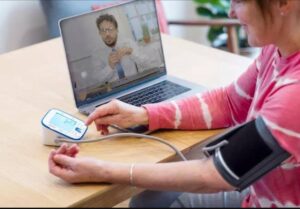
In today’s fast-evolving healthcare landscape, one innovation is quietly reshaping how care is delivered: Remote Patient Monitoring (RPM). With the growing need for accessible, cost-effective, and continuous healthcare—especially for patients with chronic conditions—RPM has emerged as a game-changing solution that extends care beyond the traditional hospital setting.
What is Remote Patient Monitoring?
Remote Patient Monitoring involves the use of digital technologies to collect medical and health data from patients outside of traditional healthcare facilities. These data—such as heart rate, blood pressure, glucose levels, oxygen saturation, and more—are transmitted securely to healthcare providers, enabling real-time monitoring, early intervention, and personalized care.
RPM typically includes:
Wearable devices (e.g., smartwatches, biosensors)
Connected medical equipment (e.g., digital blood pressure cuffs, glucometers)
Mobile apps for symptom tracking and medication reminders
Cloud-based platforms for storing and analyzing patient data
Why is RPM Gaining Momentum?
1. Chronic Disease Management
Chronic illnesses like diabetes, hypertension, and heart disease require ongoing monitoring. RPM helps patients manage these conditions effectively from home, reducing hospital visits and complications.
2. Improved Patient Engagement
With real-time feedback and digital reminders, patients are more involved in their health journey, leading to better compliance and outcomes.
3. Hospital-at-Home Models
Especially since the COVID-19 pandemic, healthcare systems have adopted RPM to deliver acute care in the home setting, freeing up hospital capacity while maintaining high standards of care.
4. Cost Savings
Early detection of health deterioration can prevent expensive emergency interventions and readmissions, reducing overall healthcare costs for both providers and patients.
5. Accessibility in Remote Areas
RPM is particularly valuable in rural or underserved regions, where access to healthcare professionals is limited. It brings care directly to patients’ homes, closing the geographic gap.
Real-World Applications
Cardiology: Monitoring arrhythmias or heart failure symptoms using wearable ECG devices.
Diabetes Care: Continuous glucose monitors alert both patients and doctors of dangerous spikes or drops.
Post-Surgical Recovery: Ensuring stable vitals and wound healing from a distance to minimize complications.
Elderly Care: Supporting aging-in-place with fall detection, medication alerts, and vital tracking.
Challenges and Considerations
While RPM holds great promise, several challenges remain:
Data Security & Privacy: With sensitive health data being transmitted, ensuring HIPAA-compliant systems and strong cybersecurity is crucial.
Digital Divide: Not all patients have access to smartphones or stable internet, potentially widening healthcare inequities.
Integration with Existing Systems: Ensuring seamless compatibility with electronic health records (EHRs) and workflows is key for adoption.
The Future of RPM
Advancements in AI and machine learning will enhance RPM by identifying trends, predicting flare-ups, and enabling proactive care. Integration with smart homes, voice assistants, and even robotics will further personalize and automate care delivery.
Conclusion
Remote Patient Monitoring is redefining the healthcare experience making it more proactive, patient-centered, and efficient. As technology continues to evolve, RPM will play a central role in the future of medicine, shifting the paradigm from reactive treatment to continuous, connected care. For patients, it means more control over their health; for providers, better tools to deliver timely, impactful care.
